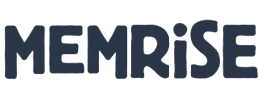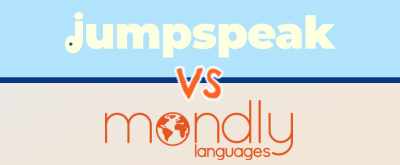When it comes to learning a new language, there may not be any two apps more different than Pimsleur and Memrise. They are incredibly different in how they approach the learning process in terms of lesson design and framework. In this comparison, we analyze the pros and cons of each program so you can determine which one better suits your learning style.
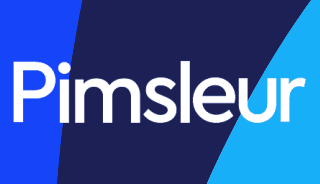
Free 7-Day Trial
Sign Up Today
|
$20/mo |
Pimsleur offers in-depth audio lessons, smart drills, and rigorous content. It is much more comprehensive than Mondly. |
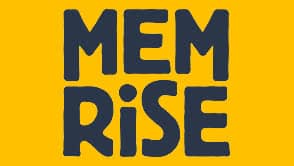
Sale: 50% OFF
Applied In Cart
|
$8-$15/mo |
We see Memrise as being a good choice for those looking to build out their vocabulary. Lacks grammar instruction, but good for vocab retention. |
Editor’s Choice
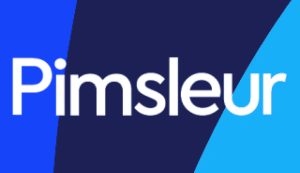
Pimsleur
- 50+ Languages
- Money Back Guarantee
Pros
- More comprehensive program overall as compared to Memrise
- Interactive audio lessons really improve your listening comprehension
- New Voice Coach feature provides instant feedback during pronunciation exercises
- Ability to complete lessons in the car (driving mode)
- Intuitive and modern digital platform and mobile app
Cons
- More expensive than Memrise
- Wish lessons incorporated more visual elements
How The Two Language Programs Work
Let’s begin with a discussion on what each language program looks like on the inside. In other words, let’s quickly break down how each app works.
Memrise
Memrise has a pretty unique course structure among language apps. Rather than using a strict learning path, where lessons build on one another and you work through them in a very sequenced manner, Memrise has a bunch of courses which are generated by both the Memrise team and by other Memrise users.
Among all of these courses, you then pick and choose which course you want to take. If you are learning Spanish, for example, you can start with Memrise’s standard Spanish 1 course, or pick a random user-generated course if you want.
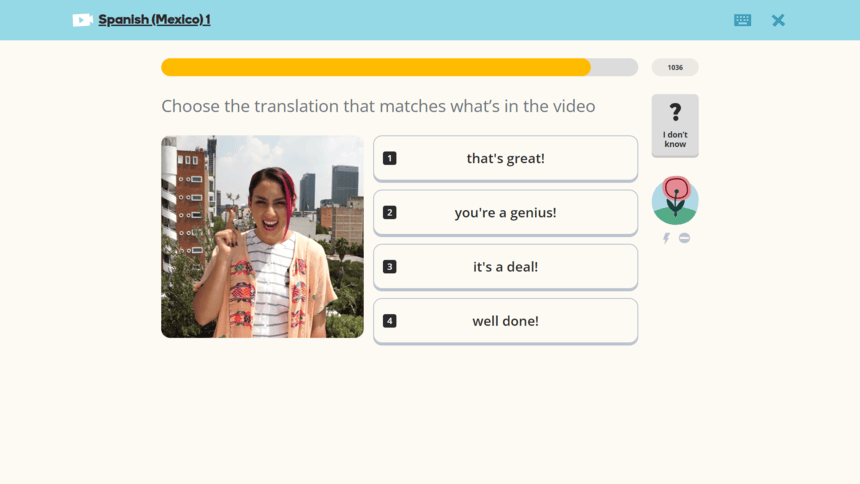
In short, the program structure is more free flowing. What’s more, once you choose a course, even the lessons are a little different.
Rather than having modular lessons that vary in length and focus on varying topics, with Memrise, you pick how many words you want to learn per day. It is just a totally different setup. You select how many words you want to learn, then you do your daily sessions, and learn that many words. Simple enough.

As for the exercises in each session to teach you those words, it’s a pretty varied approach. There are short video clips, listening drills, typing exercises, matching word pairs, and a few of the more standard exercises you see across different apps.
That’s Memrise from a high-level though. You choose a course, set your daily word goal, and start learning with some rapid fire drills.
Pimsleur
As noted above, Pimsleur is very different than Memrise. The Pimsleur program is driven largely by audio lessons.
To start each unit, you complete a 30-minute audio exercise, where a moderator speaking in English guides you through a conversation in your new language step-by-step.
You listen to a few phrases or sentences in the new language, the moderator will briefly stop to explain the situation to you and what you just heard, and then he will have you participate by answering questions and repeating phrases.
These 30-minute audio exercises are the groundwork of the Pimsleur lessons—everything is built around them.
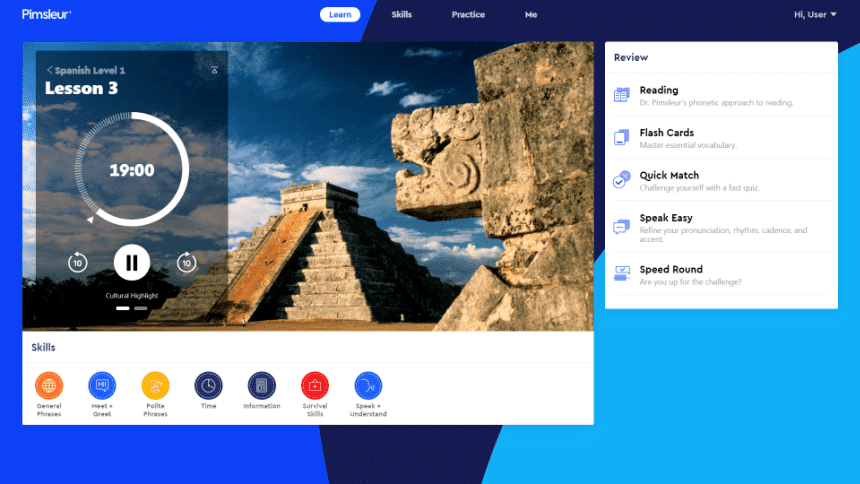
After the audio lesson, you review and reinforce what you just learned through a variety of drills and exercises. In a way, you could think of these drills as homework after class.
These reinforcement exercises include reading drills, digital flashcards, quizzes, pronunciation training, and speed games. Additionally, there are some supplemental features too, like vocab bonus packs and speaking challenges with their Voice Coach tool.
That’s Pimsleur from a high level though. You have core audio lessons followed by detailed review exercises, with a few supplemental tools wrapped around it. This learning framework applies to the Pimsleur French, Pimsleur Italian, and Pimsleur German courses.
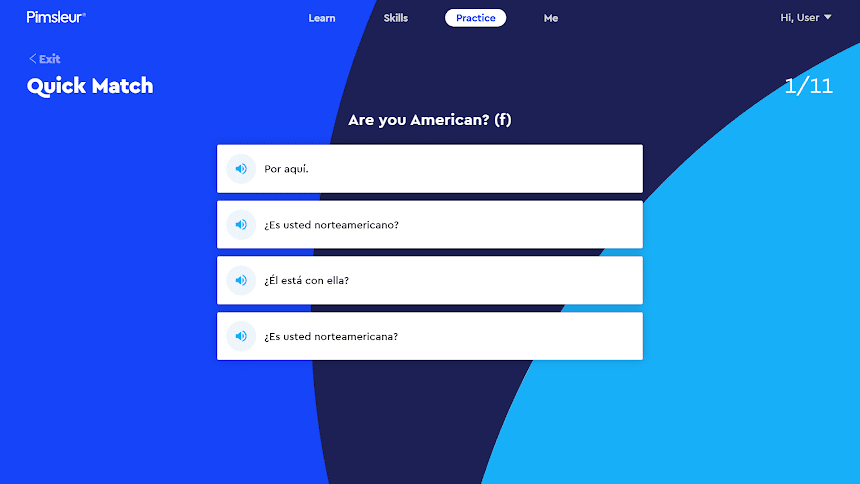
Without overcomplicating it, that is how the two companies generally compare. Your main takeaway should be that these two programs are very different.
Pimsleur lessons take around an hour to complete from start to finish, and place a very strong emphasis on listening and speaking in the context of mock conversations, while the Memrise program is more about learning new words and phrases through rapid fire drills across various courses.
Cost Comparison
Before I dive into discussing what I like and don’t like about each app, let’s quickly talk about cost. Memrise has a pretty simple pricing model with just three plans.
- You can pay monthly as you go for $8.50 per month;
- You can pay for an annual subscription, which costs $60 per year; or
- You can buy a lifetime membership for $120.
Pimsleur has a couple different plans, both of which are monthly, pay-as-you-go subscription options. First is the Pimsleur Premium Plan, which gets you access to one language. It costs $20 per month. Then there is the Pimsleur All Access Plan, which gets you access to all 51 of Pimsleur’s languages, and costs just $21 per month.
Therefore, stacking these two apps up side-by-side, Memrise is clearly more affordable, and by a decent margin. It is literally $12 to $15 per month cheaper, depending on your plan.
That being said, I would just note that Pimsleur is pretty good about running discounts where you can lock in a lower rate, so make sure to check for coupons before buying.
Reasons To Choose Pimsleur
Now that we have discussed how each app works, as well as what they cost, let’s get into what I like about each app and where I see each company being better than the other. Let’s start with Pimsleur.
In-Depth Audio Lessons
The first highlight of the Pimsleur program is that it is a far superior program at jumpstarting your conversational skills.
One of the most effective ways of learning a language is getting frequent, heavy doses of verbalization. You need to consistently hear and speak the new language you’re learning to get comfortable with it, and Pimsleur offers more opportunity to do that than Memrise.

The reality is that Memrise is more of a vocabulary tool, teaching you a bunch of new words and phrases, but not helping you string them together into conversations.
In contrast, the Pimsleur audio exercises are great at developing your listening and speaking skills as you get daily doses of real conversations with their audio lessons.
I am a huge proponent of language apps with audio lessons, and Pimsleur’s are some of the best.
Lesson Format Allows For Flexibility
There is a secondary benefit of Pimsleur’s audio lessons. As the audio lessons are obviously audio-based (duh), they’re a lot more flexible than Memrise’s lessons in terms of when and how you can work them.
Basically, for the audio portion of each Pimsleur lesson, you’re not tied to your phone. You don’t have to be staring at a screen, watching videos, matching word pairs, or typing phrases in.
With the audio lessons, you can hit play and go about whatever you’re doing. You can do a lesson while you’re on the Peloton, folding laundry, taking a walk, whatever.
In short, I like that you can be productive with your time while still doing a lesson—it’s a huge bonus. You can even do an audio lesson while driving because they have a special driving mode, which is very nice.
Pimsleur Voice Coach
Next, I want to call out Pimsleur’s Voice Coach feature. In the last year or so, Pimsleur has rolled out a new voice recognition software tool that by all measures is great.
The program listens to you say words and phrases, and then gives you feedback on your pronunciation on a grading system. Honestly, the accuracy of the feedback is really strong.
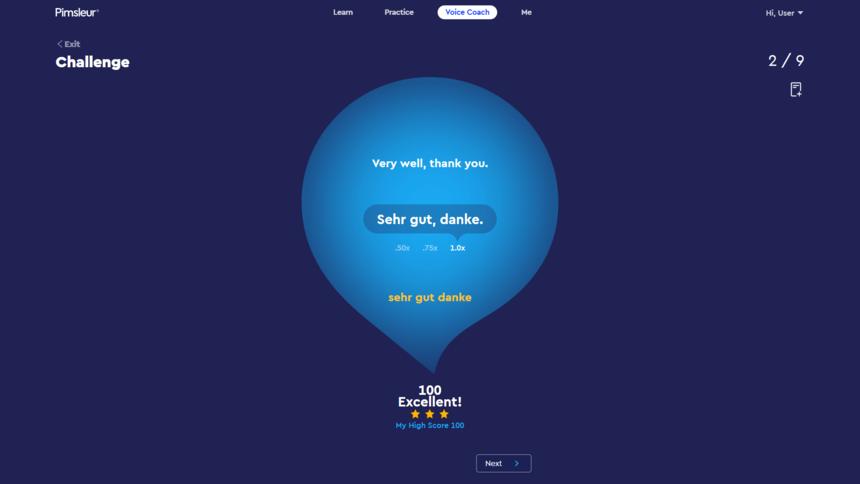
When you mispronounce something, it will tell you with a poor grade—usually just one star. Plus, one aspect of this tool that I especially like is the challenge mode.
When you turn this on, you’ll be prompted in English to say a phrase in your target language with no hint as to how to say it. This makes you think critically about what to say plus you need to nail your pronunciation.
It’s difficult, but very useful. Given that Memrise doesn’t really have any speech software tools like this, this is a major advantage for Pimsleur.
Modern Digital Platform
Lastly, the final win for Pimsleur is that they have a better interface and user experience than Memrise.
The Pimsleur digital platform is one of the quickest and sleekest apps we’ve tested.
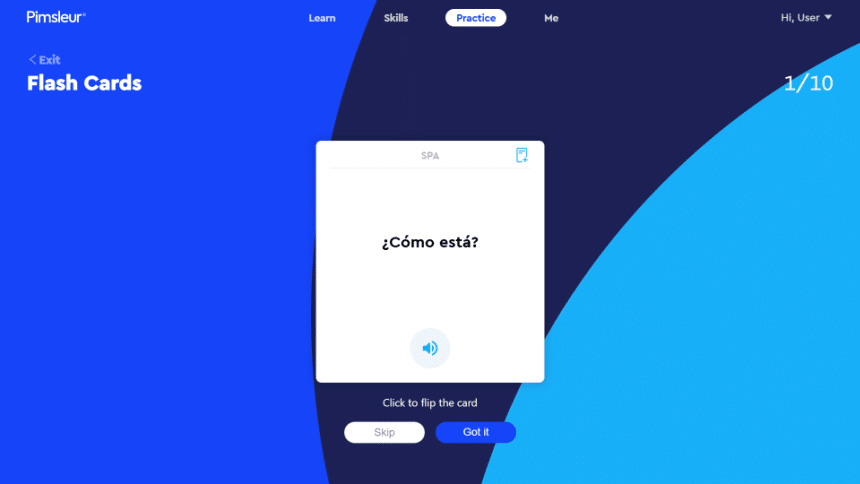
Everything is easy to navigate, fast, and just plain pretty, for what that’s worth. Don’t get me wrong—the Memrise user experience isn’t bad by any means, but Pimsleur is just about the best in the space when it comes to this aspect.

Memrise
- Free Plan Available
- Money Back Guarantee
Pros
- Ideal for visual learners (lessons include video clips)
- User-generated courses cover interesting and niche topics
- Adjust lesson length to fit your preference
- Great tool for new vocabulary building
Cons
- No in-depth conversational practice
- User experience differs by device (can be annoying)
- Limited grammar instruction
Reasons To Choose Memrise
Now that we have discussed the reasons to opt for Pimsleur, I will lay out the case for Memrise and discuss their strengths.
Lessons Incorporate Video
The first strength of the Memrise program that I want to highlight is their use of video. There are a bunch of short video clips throughout the Memrise exercises that show fluent speakers saying the words and phrases that you’re learning (somewhat similar to Lingopie).
To me, this is a major advantage for Memrise as it’s something missing from the Pimsleur program altogether. With Pimsleur, there aren’t many visuals in the app, and definitely no video.
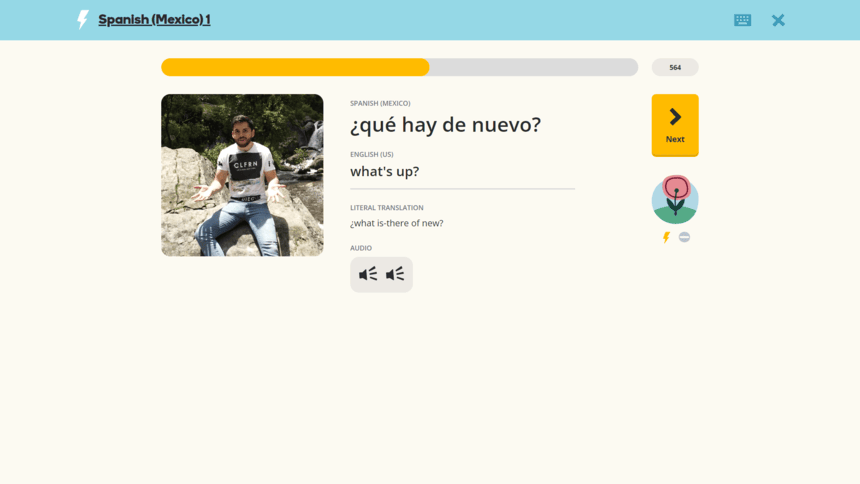
Personally, I think video is a powerful teaching tool. You get to see fluent speakers’ body language and facial expressions. Plus, it creates visual memory aids to associate with the new words or phrases you are learning. It’s a big value add for visual learners.
Great Tool For Learning New Vocabulary
My second win for Memrise is their spaced review system. In my opinion, Memrise is very smart about how they call back words and phrases periodically to help transfer them to your long term memory.
Just about every study ever conducted on the topic of learning science has shown that spaced review works, and Memrise leans into this belief hard.
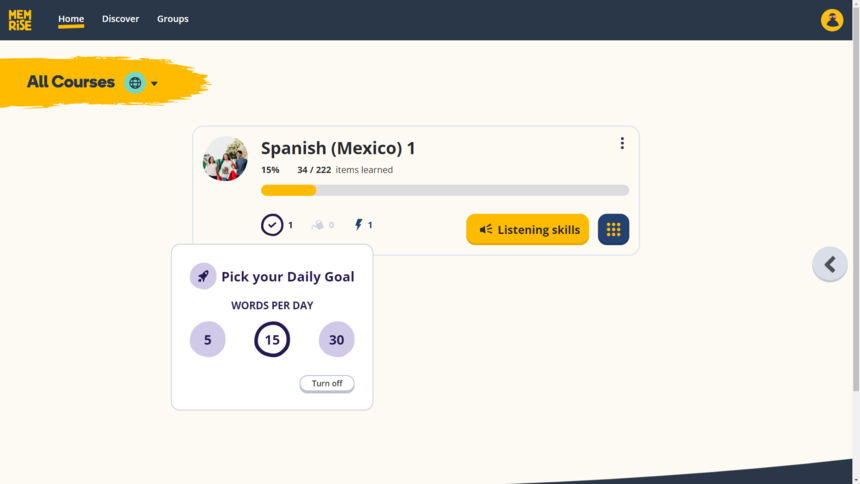
Every session, Memrise will pull back in old phrases you’ve learned to have you review them. Plus, they even use this cool little flower icon to show how far you’ve come in learning your new words.
A new word will start as a seed, and every time you review that word, it will show the little flower growing more and more until it’s in full bloom. Once you hit full bloom, you should know that word without hesitation. It’s kind of a silly little feature, but I like it alongside their spaced review system.
User-Generated Courses
Lastly, one unique feature of the Memrise program is their user-generated courses. I haven’t seen any other apps offer this functionality.
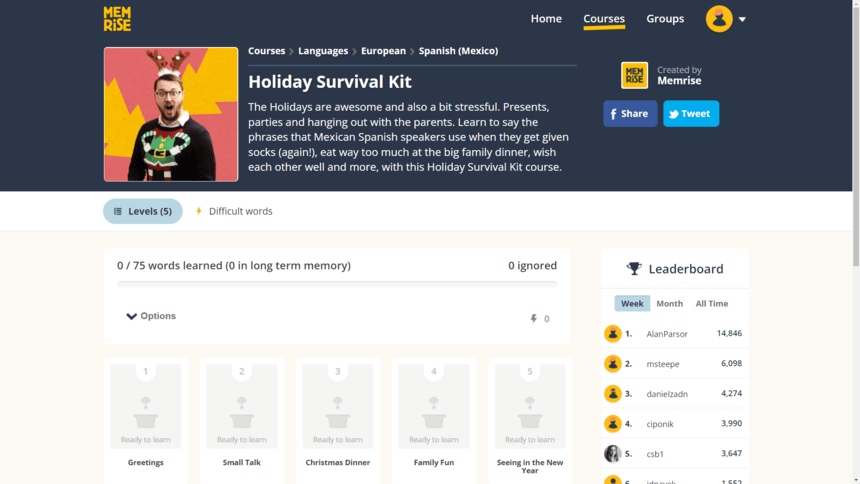
Basically, Memrise allows users to create their own courses on specific topics with exercises, videos, and new vocab. And the cool thing is that most of the user-generated courses cover really niche topics you otherwise wouldn’t learn vocabulary for, like terminology for holidays, local food, and animals.
You get some real specialty courses, which I think are great for building out your vocab base once you’ve achieved an intermediate level of fluency.
Final Verdict: Pimsleur or Memrise?
Between these two language learning apps, if you’re trying to select only one to study with, in my eyes, it’s not even really a competition—Pimsleur is a far superior program.
With their in-depth audio lessons, reinforcement drills, Voice Coach software, and supplemental tools, it’s a much more comprehensive language program.
To me, Memrise is more of a flashcard-like app built around vocab. I like it for what it is, but it’s hard to imagine becoming truly fluent using this app alone. I believe a better approach would actually be combining the two.
I would suggest using Pimsleur for your mainstay learning program, and then fill in the gaps with Memrise’s quick-hit vocab drills and flashcards. That would be a nice way to develop your grammar and speaking skills, while also building a nice base of new words and phrases.
Lesson format is the biggest difference between Pimsleur and Memrise. They are vastly different. The Pimsleur lessons primarily revolve around in-depth audio lessons, while the Memrise lessons are more visual in nature and focus on quick-hit drills.
After testing out and reviewing each program, it is clear that Pimsleur offers the more well-rounded and effective language courses on the whole. If you are trying to learn a new language quickly, Pimsleur is the superior choice.
Yes, the Memrise plans are more affordable than those from Pimsleur. In fact, Memrise even offers a limited free plan.


